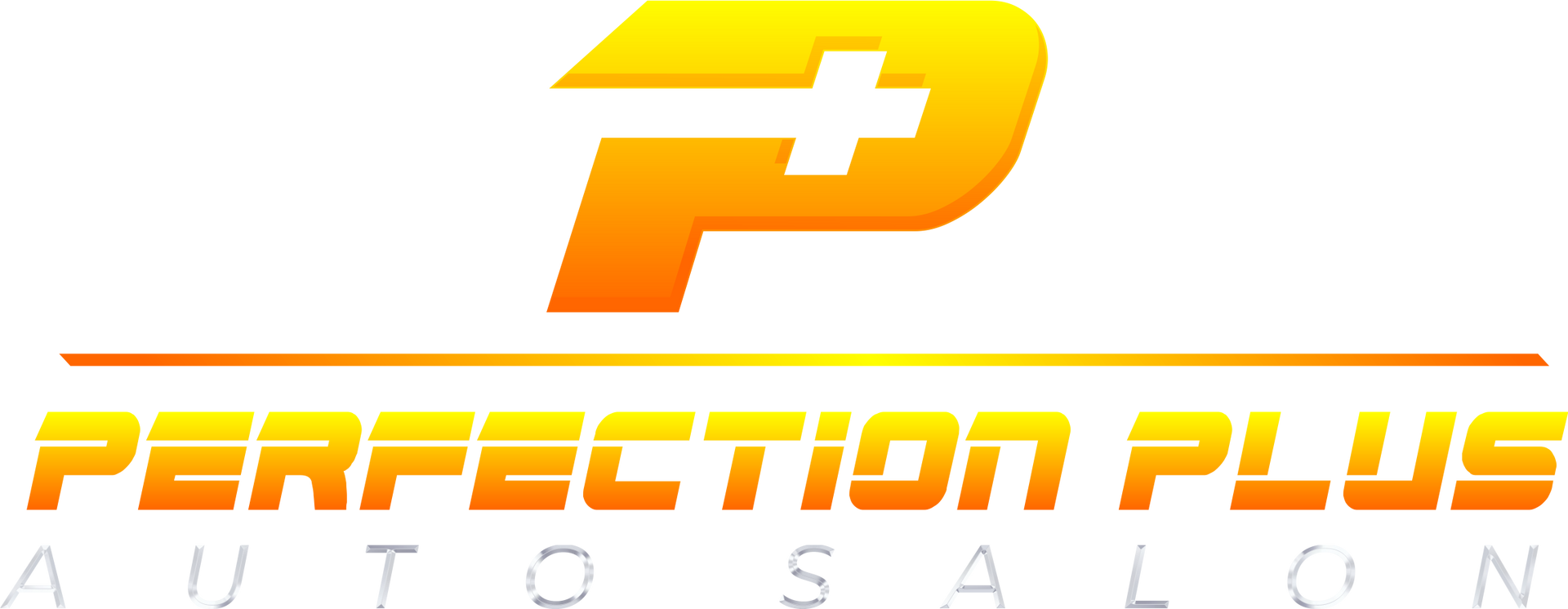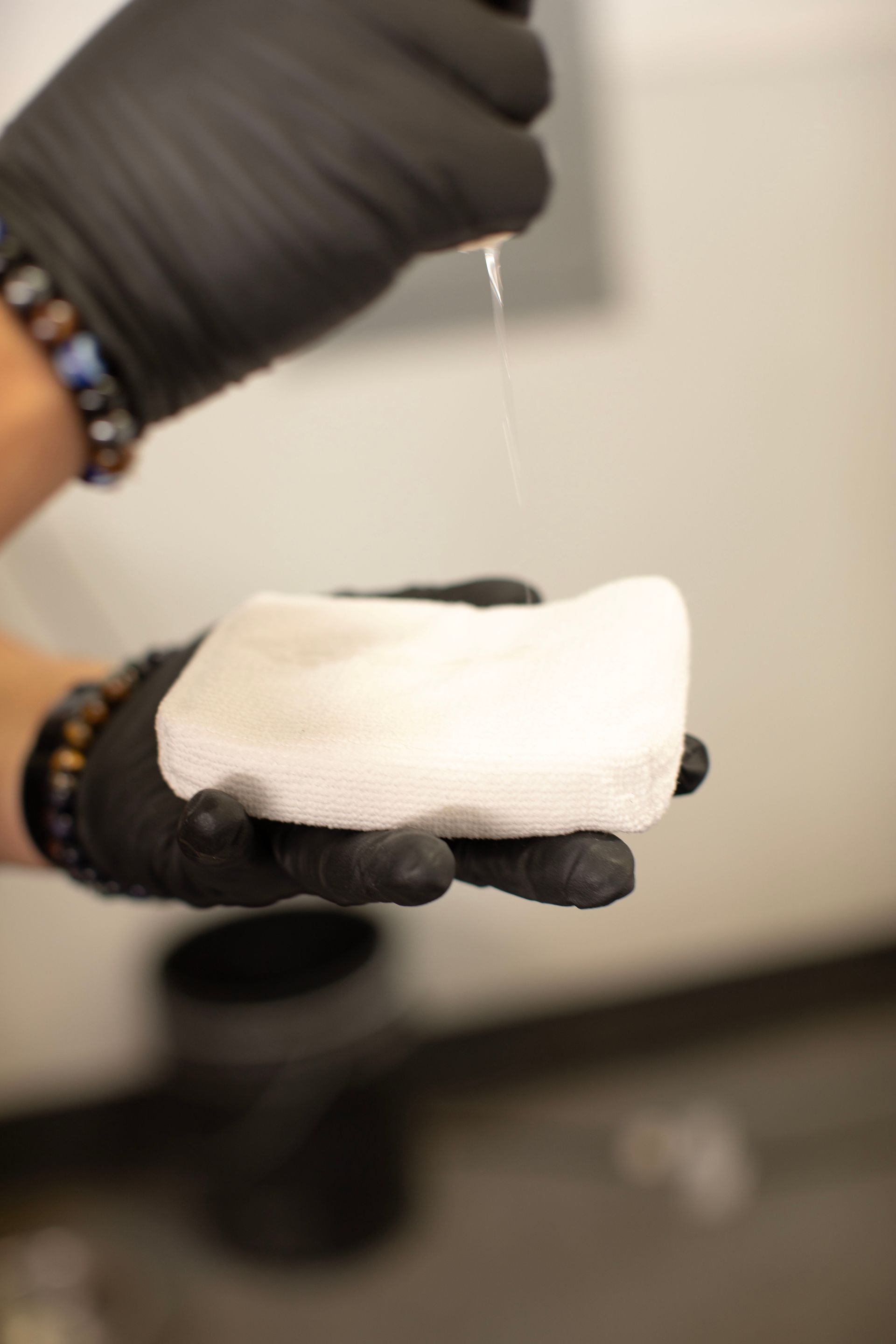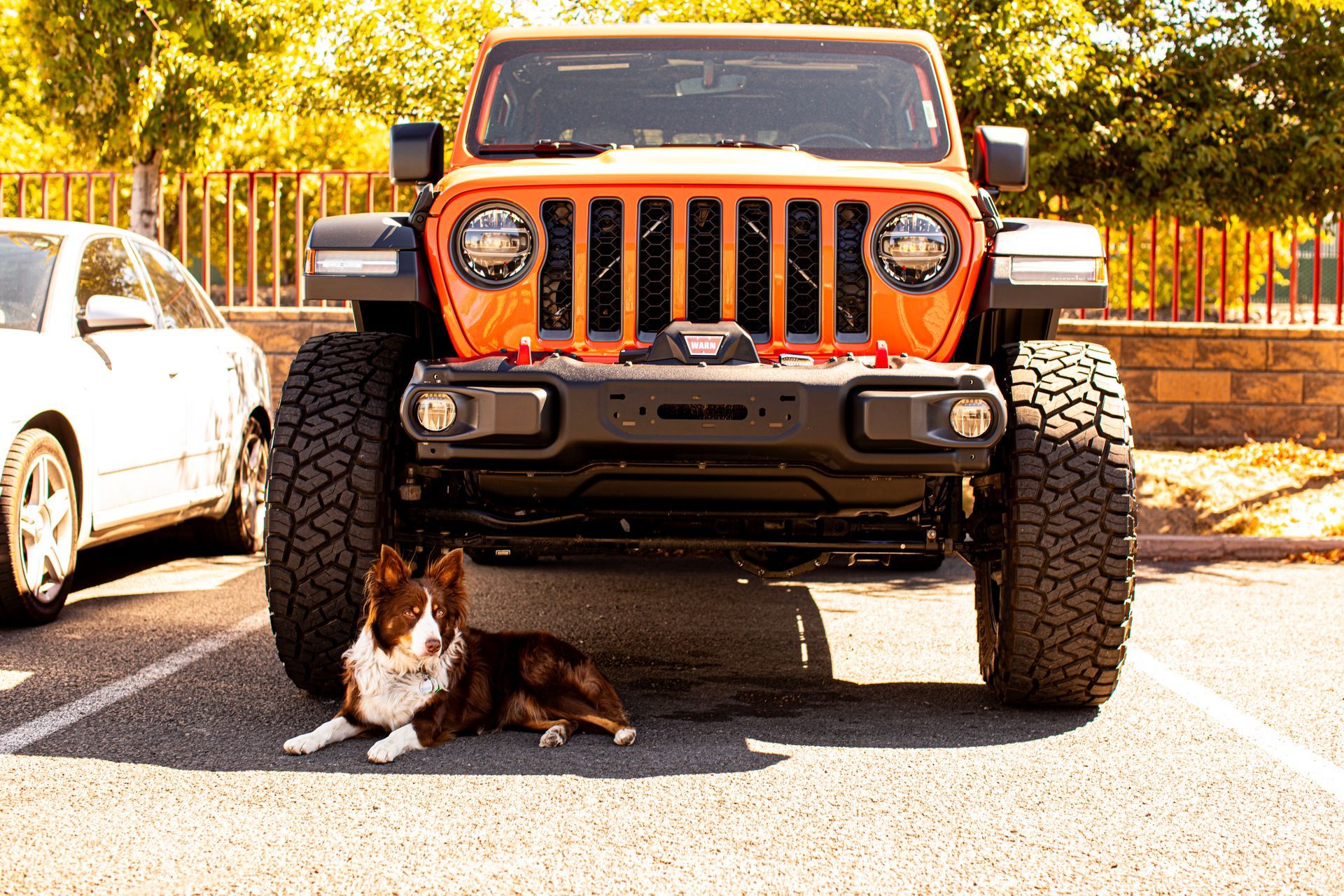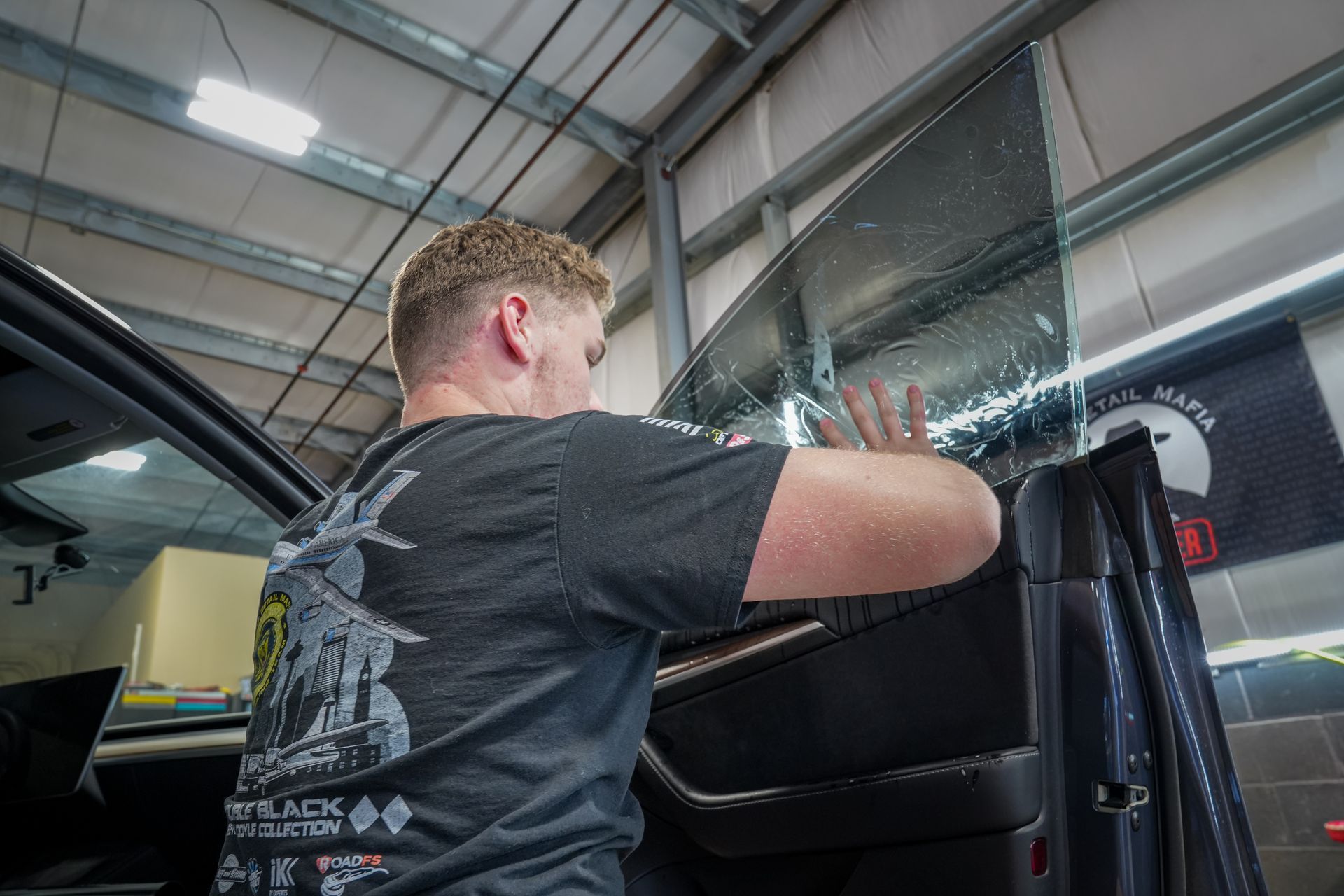Science of Ceramic Coating: Why It's So Effective for Your Vehicle
GET A FREE ESTIMATEWhen it comes to preserving the exterior finish of your vehicle, you may question whether traditional waxes and sealants provide sufficient protection. Despite investing significant time in washing and polishing, many drivers find that dirt and grime quickly return, diminishing the results of their efforts. Ceramic coating presents a more advanced and enduring solution—engineered to maintain a vehicle’s glossy appearance while offering superior resistance to environmental contaminants. Thanks to its specialized chemical composition and long-lasting performance, ceramic coating is not merely an enhancement but a practical investment that can significantly reduce maintenance and preserve your vehicle’s aesthetic appeal over time.
The effectiveness of ceramic coatings lies primarily in their composition, which includes polydimethylsiloxanes (PDMS) that create strong covalent bonds with surfaces, enhancing durability and hydrophobic properties. During the curing process, these coatings form -Si-O-Si bonds that orient the methyl groups outward, resulting in high water contact angles that repel contaminants and make surfaces easier to clean, thereby providing long-lasting protection against environmental elements like UV rays and chemical exposure.
The Chemistry of Ceramic Coating
Ceramic coatings, often referred to as glass or nano coatings, derive their effectiveness from a unique blend of organic and inorganic materials. At the heart of these coatings lies silicon dioxide (SiO2), which typically makes up a significant portion—between 20% and 70%—of the coating's formulation. This ingredient is not merely an additive; it's the backbone that provides both durability and the desired protective qualities.
Key Components and Their Roles
Among the vital components in ceramic coatings are resins like polydimethylsiloxane (PDMS) and silane additives. Polydimethylsiloxane (PDMS) significantly contributes to the overall durability and glossiness of ceramic coatings, thereby enhancing their resistance to wear and tear over time. This resin creates a surface that’s not just visually appealing but also fortified against environmental factors. The addition of silane is equally important. These silane additives enhance adhesion, enabling a strong covalent bond with surfaces such as paint and metal. This means that when you apply a ceramic coating, you’re not just laying down a layer; you’re forging a partnership between the coating and the material it protects. Understanding this molecular relationship sheds light on why ceramic coatings outperform traditional waxes or sealants. As soon as PDMS interacts with moisture during application, it triggers a crucial curing process where -Si-O-Si bonds are formed. This step is fundamental as it leads to the creation of a durable three-dimensional network that enhances the hardness and resilience of the coating itself.
How Ceramic Coating Protects Surfaces
The most captivating aspect of ceramic coatings is their protective nature. They're designed to create a resilient barrier that goes beyond traditional solutions like wax and sealants. At the core of this protection is its hydrophobic nature. Water contact angles that range from 91° to 120° mean that when raindrops hit a coated surface, they bead up and roll off rather than sit there, causing stubborn stains. This ingenious design helps keep the vehicle clean and significantly cuts down on the time spent washing it. Think of it as having a protective umbrella for your car's paint. This coating creates a defensive layer over the car’s paintwork that actively wards off contaminants, making it difficult for dirt, dust, and grime to bond with the surface. For instance, pesky bird droppings can cause damage if left untreated; however, with a ceramic coating, these droppings are less likely to stick and can be wiped away much more easily, minimizing potential etching into the paint. But their protection extends beyond mere water and dirt resistance.
UV and Chemical Resistance
In addition to their hydrophobic qualities, ceramic coatings also excel in UV resistance. They act like a sunscreen for your car, shielding against harmful ultraviolet rays that can lead to paint oxidization and color fading. This capability is crucial in areas with intense sunlight exposure, where cars can quickly lose their luster without proper protection. Research shows that ceramic coatings block up to 99% of harmful UV rays, helping maintain that showroom shine long after application. Furthermore, these resilient layers resist not only environmental elements but also acidic contaminants like bird droppings or harsh cleaners. Considering how dangerous these substances can be for untreated surfaces—often leading to discoloration and degradation—the value of a ceramic coating becomes significantly clearer. With such significant protection, you can enjoy peace of mind knowing your investment is safeguarded against common yet damaging threats.
Application Process Explained
Applying ceramic coating is not just slapping it on and hoping for the best; it’s a meticulous process that, when done correctly, results in a durable, protective layer for your vehicle.
- Surface Preparation: The first step emphasizes the importance of surface preparation. A thorough cleaning of the vehicle is essential. Before thinking about the ceramic coat, you must wash away dirt and grime. More critically, you need to strip off contaminants such as tar, iron particles, or old wax that could impede proper adhesion of the coating. Utilizing a clay bar can elevate this cleaning process; it ensures a deep clean that leaves the surface smooth as silk.
- Polishing: This step is typically performed using a dual-action polisher to refine the paint's surface and maximize gloss. The process brings out a rich, vibrant shine, eliminating dullness and creating a smooth foundation that reflects light beautifully. A properly polished surface ensures optimal conditions for the ceramic coating to bond effectively. Once polishing is complete, we proceed to the most exciting phase—applying your ceramic coating.
- Application: During professional application, technicians apply the ceramic coating in precise, overlapping sections using high-quality applicator pads to ensure uniform coverage and eliminate the risk of streaks or high spots. Strict attention is paid to product-specific flash times, as coatings must be leveled within a narrow window to achieve optimal bonding. Each section is carefully inspected for consistency and clarity, allowing for immediate correction if necessary.
- Curing: It's vital to give your freshly coated vehicle ample time to cure properly without interference from water or environmental pollutants. Ideally, you should keep it in a dry and sheltered space for 24-48 hours post-application before exposing it to water. Full curing can take up to seven days, during which time the coating hardens further into its final state. It's crucial not only to optimize durability but also to ensure you have effectively safeguarded your investment.
Understanding these stages equips you with valuable insights into caring for your vehicle's protective finish, setting the stage for discussing how these coatings can enhance performance and longevity.
Benefits of Ceramic Coating
The benefits of ceramic coating extend far beyond just aesthetic enhancement. When you apply a high-quality ceramic coating to your vehicle, you’re not merely adding a layer of shine; you’re investing in a robust shield that offers enhanced durability and longevity. For instance, with proper maintenance, these coatings can last up to five years or more, significantly outperforming traditional wax applications that typically wear off in mere months. This extended lifespan makes ceramic coatings a cost-effective solution for vehicle owners who are serious about protecting their automotive investments. In terms of durability, the resilience of ceramic coatings stands out as one of their most compelling attributes. They withstand harsh environmental factors like UV rays, which can lead to paint fading and oxidation over time. With ceramic coatings, you gain an added layer of protection against these damaging elements.
Perhaps one of the standout features is the hydrophobic nature of these coatings. When water meets a ceramic-coated surface, it beads up and rolls away effortlessly. This trait not only makes cleaning easier by reducing dirt and grime adhesion but also cuts down on the time and effort required for routine maintenance. Imagine simply hosing off your car and seeing dirt slide right off—it’s every driver’s dream! Furthermore, let's not overlook the stunning visual impact ceramic coatings provide. Beyond creating a protective barrier, they enhance the gloss and shine of your vehicle. Many users note that their cars have an incredible reflective finish—like freshly polished paint—even weeks after application. Car enthusiasts often rave about how this "like-new" finish endures against all weather conditions, from sweltering sun to torrential rain. The joy of walking into a garage and seeing your car glistening under dim light is an experience unmatched by any other standard treatment!
Why Professional Ceramic Coating Is the Superior Choice
After exploring the science, chemistry, and performance benefits of ceramic coatings, it's important to understand that the effectiveness of any coating is only as good as its application. While the market is flooded with a variety of consumer-grade products promising showroom results, professional ceramic coating services truly excel. They offer a level of precision, durability, and expertise that simply cannot be replicated with DIY kits or over-the-counter solutions.
The Expertise Behind Every Layer
Professional detailers bring not only technical knowledge but also years of hands-on experience in vehicle surface preparation and coating application. They comprehend that ceramic coating is not a universally applicable solution. Every vehicle presents a unique combination of paint condition, age, climate exposure, and usage patterns—and trained professionals know how to assess each factor before selecting the proper approach. From evaluating the type of clear coat your vehicle has to identifying micro-imperfections invisible to the untrained eye, their goal is to ensure maximum bond strength and coating performance. Moreover, the application process itself is far more nuanced than simply spreading the product across your vehicle’s surface. Professional-grade ceramic coatings often have tighter flash times and require exact temperature and humidity conditions for optimal bonding. Certified installers work in controlled environments where lighting, ventilation, and cleanliness are all regulated to minimize the risk of dust particles, streaks, or improper curing. This level of environmental control is nearly impossible to replicate at home, even in the most well-maintained garage.
Access to Professional-Grade Products
Another major advantage of choosing a professional service is access to higher-end ceramic coating formulas that are often unavailable to retail consumers. These professional-only products typically contain higher concentrations of silicon dioxide (SiO₂), advanced resin systems, and proprietary additives designed for superior bonding and protection. Some professional coatings can only be installed by certified technicians due to the skill required for proper application. Many of these coatings feature multi-layer technology or dual-component systems that provide extended lifespans—often ranging from five years to a lifetime, depending on the package selected. They offer enhanced resistance to oxidation, UV degradation, and water spotting. When applied correctly, these coatings bond with the vehicle’s surface on a molecular level, creating a protective layer that offers unmatched durability.
Tailored Solutions for Every Vehicle Type
Another standout benefit of professional ceramic coating services is the ability to tailor the product and application method to your specific vehicle. Whether you're looking to protect a new car fresh from the dealership, restore and preserve a vintage classic, or maintain the finish on a high-performance sports car, professional installers can customize the process to meet your needs. From applying additional layers to high-impact zones like the hood and front bumper to combining coatings with other services like paint protection film (PPF), these services are built around you and your vehicle—not just a product in a box.
Selecting professional ceramic coating services is a strategic investment in the future of your vehicle. It’s about preserving beauty, reducing effort, enhancing value, and driving with confidence—knowing your vehicle is protected by the most advanced paint preservation technology available today. Whether you're safeguarding a new investment or restoring an old favorite, a professionally installed ceramic coating ensures your vehicle always looks its best—rain or shine, season after season!
Top-Tier Ceramic Coating Services in Redmond, OR
Your vehicle deserves more than a quick wax or temporary shine—it needs long-term protection that holds up against the unpredictable Oregon climate and the daily wear of the road. At Perfection Plus Auto Salon in Redmond, OR, our professional ceramic coating services deliver a flawless finish that enhances your car's appearance and defends against UV rays, oxidation, bird droppings, and road contaminants. Don’t settle for short-term solutions—invest in long-term paint protection with a service that puts your vehicle first. Contact Perfection Plus Auto Salon today to schedule your appointment and discover the difference true craftsmanship makes!










